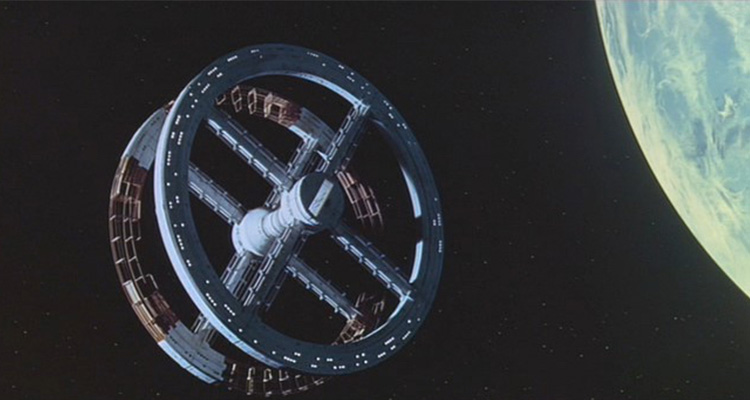It is always amazing to me how a single small event can alter trajectories that appear to be set firmly on a specific course. Perhaps our perceived life’s course is an illusion. The idea that we are set on a certain path or have purposely built a particular path plan is a chimera. You start to question these ideas when on your path. You pause and pick up what appears to be a tiny random shiny pebble along the way, and everything changes or everything comes together. We have a name for this … “serendipity.”
On Aug. 24 of 2018, while doing Internet research for one of our science programs at a local school, I ran across an ad that said essentially, “Wanted, Big Ideas for the National Science Foundation.” I absently clicked the link. This link took me to an NSF government page with a fancy logo of multiple interlocking gears as tables of people working together with the title “Coming Soon: The NSF 2026 Idea Machine.” I read on …
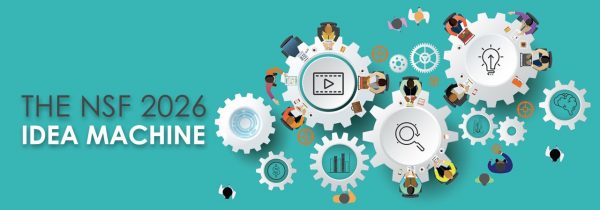 “… Finding Big Ideas 2.0”: Identifying new directions for research.”
“… Finding Big Ideas 2.0”: Identifying new directions for research.”
This caught my attention. NSF is the premier federal funding agency for public academic research on the planet. Surely, long ago, their research agenda had been set in stone by a legion of the brightest minds on the planet! I had always thought: NSF does not ask for input, NSF did not ask for anything, NSF gives grants for research that it mysteriously deems important and changes those funding directions and priorities by the influence of tides forever hidden from the general public. And yet, here was the invitation by NSF to me, a citizen scientist, to:
“… help set the U.S. agenda for fundamental research in science and engineering.”
For me, a science guy, this was like a small child buying a candy bar and finding one of the golden tickets to Willy Wonka’s Chocolate Factory inside. But there was a simple fundamental and pressing little problem: I had to come up with a “New” direction of research, a “Big Idea” that had not been suggested during the many decades that NSF was in operation. Some new direction that had been somehow overlooked by the very best and brightest researchers in their fevered scramble for funding. Unquestionably every possible area of research had been thoroughly examined by countless hordes of scientists, academics and graduate students, decades ago. How would or could “I” find anything both “Big” and “New” on the vast carcass of research topics that had to have been meticulously picked clean by generations of funding-starved researchers? What “Big Idea” had they missed? What “New Direction” had been left untouched? I laughed at the hopelessness of the overwhelming and daunting task; besides I had a school group science program to prepare for. I was about to back-page to my previous link when my eye caught the rest of the paragraph:
“… Participants can earn prizes and receive public recognition by suggesting the pressing research questions that need to be answered in the coming decade, the next set of ‘Big Ideas for future investment by the NSF.’”
They had my attention again. “Prizes” — well that word was specifically chosen to be shiny and sparkly and get attention. It worked. I read on:
“It is an opportunity for researchers, the public and other interested stakeholders to contribute to NSF’s mission to support basic research and enable new discoveries that drive the U.S. economy, enhance national security and advance knowledge to sustain the country’s global leadership in science and engineering.”
Well, that was it. I was hooked. I was going to give it a try. I was not doing this for the Prizes, well mostly not for the Prizes. OK, I was doing it for, the as yet, undisclosed Prizes. But, as a citizen scientist, I was doing this for the selfless and noble reasons outlined in this last sentence … and the Prizes.
Over the next few days, with the help of my wife Libby, I made a list of my best ideas that might fit the needs of NSF’s Big Ideas. By the end of the week, I narrowed it down to 13 possible Big Ideas. Too many. With a little work, this was whittled down to nine. That day I talked the problem over with some friends at the weekly planning session of the Wheeling-based non-profit, the Near Earth Object Foundation. Of the nine Big Ideas, I had my favorites, but I wanted input from others that knew of these ideas and their background.
To my utter dismay, they ignored my favorites and picked (in my judgment) the very least interesting Big Idea. We discussed it back and forth — they were firm — “No Robert, that is the best of your Big Ideas.” At the end of our weekly meeting, we left it that we would all sleep on it and discuss it again in a week.
A week later, the weekly NEO Foundation meeting reconvened; the members held firm to their first choice. They said the other Big Ideas were good, maybe too “out there,” maybe too Big and futuristic to be accepted for the NSF Big Ideas. Maybe in another five to 10 years, if NSF revisits this request for public input of Big Ideas, you could send in one of your favorites, but not now.
At last, I had to agree — they were right. I have spent most of my professional career trying to get other people to accept my ideas — ideas that they are not ready for, to my frustration and often to their dismay. It is an ongoing theme threading through my life. For some reason (I point to my interests in science fiction, possessing a broad background in general science, and a belief that mathematical patterns can be found in and can be applied to everything), I frequently see tessellated patterns in the world around me often emerging five, 10 or 20 years before the patterns become generally accepted and obvious public truths. Far too often, I hear others who, years before, laugh at my ideas or, at best, just roll their eyes and say the all-too-familiar phrase, “Wow, what do you know about that, you know, you were right after all.” My friends were correct; the NSF was not looking for an anachronistic Big Idea out of time. My friends were saying that the NSF wanted a Big Idea for the present time. A Big Idea able to be used now, not half a generation in the future.
Before we get into the Big Idea, first, a little background.
Gravity … is a universal and fundamental property of matter. Gravity is by far the weakest of the interactions or forces of matter we know of. Due to the vastness of the universe and the titanic scale of the objects or collections of objects in the universe, gravity dominates not only the structure of planets, moons, stars and star clusters, but the structures of entire galaxies and galactic clusters and how these galactic clusters cluster into the largest hierarchies yet known.

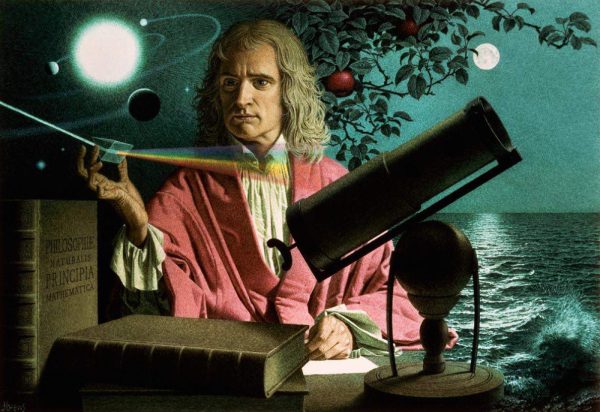
Over three and a half centuries ago, Sir Isaac Newton was the first to quantify gravity as a universal attractive force between all material objects. Newton proved (by using calculus, which he invented for just this application) that the strength of this attractive force (Fg) was directly proportional to a simple formula.
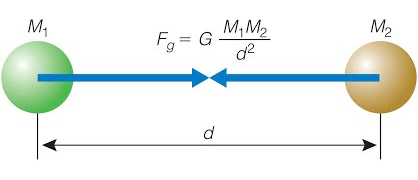
Newton found the gravitational force was simply the product of the masses (amount of matter stuff) in any two objects (M1 x M2) and inversely proportional to the distance between the centers of each of those masses squared (1/d2) multiplied by some constant he was unable in his time to accurately find, termed the “Gravitational Constant” (G).
This formula and the science it helped to usher in, caused mathematics and science to flourish and make the universe a more understandable place for almost two and a half centuries until better observations and newer theories suggested a few “tweaks” to Newton’s ideas of gravity were necessary.
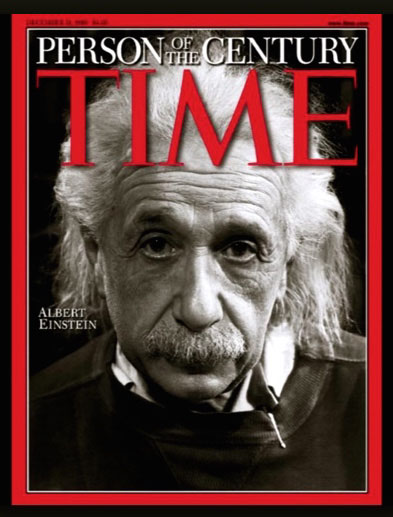
Just over a century ago, Albert Einstein offered an improved response to the needed tweaks to Newton’s gravitational theory. Einstein’s General Theory of Relativity advanced the notion that perhaps gravity was not a force, a push or pull, but rather a change in the very shape of the time and space an object was in.
For Newton, space and time formed the rigid immutable stage upon which matter and energy played out their celestial interactive dance of the universe that we perceive. Einstein suggested that, instead, this very stage, the fabric of space and time, was elastic, flexible and malleable by the very presence of matter and mass.
Einstein proposed that gravity was geometry. Simply stated: matter or mass changes the shape of the fabric of the space and time that wraps around and permeates a material object and influences how matter and energy interact.
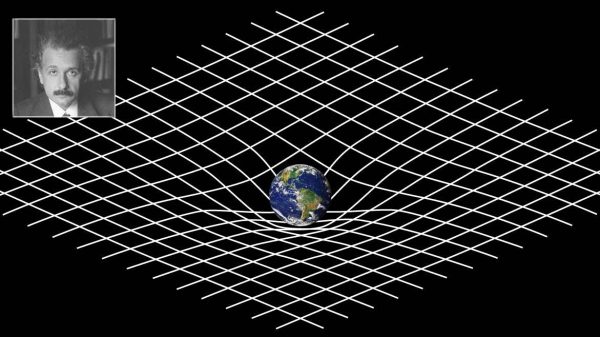
It is interesting that in over a century of tests and observations throughout the observable universe, Einstein’s idea of gravity in his General Theory of Relativity has passed every test and observation and remains steadfast as one of the pillars of 21st-century science. We will not for a moment pretend that Einstein’s idea is the last word in gravity, but we can say that it is a truer truth than Newton’s ideas, and his ideas of gravity were a truer truth than those of Galileo, and Galileo’s ideas were a truer truth than those gravity ideas of Aristotle. One of my pet theories is that we may never know the absolute truth about gravity, but as time goes on and we learn more and ask more questions, our present truth is truer than the truth we held in the past, and the truth we find in the future should be truer and closer to the absolute truth that what we know today.
This temporal progression of ever truer truths is an inherent property of doing good science. Science is an evolutionary way of finding the truest truths by testing, experimentation, and observation. I have coined the term “Asymptotic Truth” as the progression ever nearing, ever approaching, but never quite reaching the Absolute Truth of a phenomena like gravity. Our understanding of gravity gets better and better over time, and maybe someday our understanding of gravity will be so close to the Absolute Truth of what gravity really is that it would be indistinguishable from the Absolute Truth. However, that day may be a long time from now. For the present time, the good news is we are getting ever closer to understanding the true nature of gravity using Einstein’s theories.
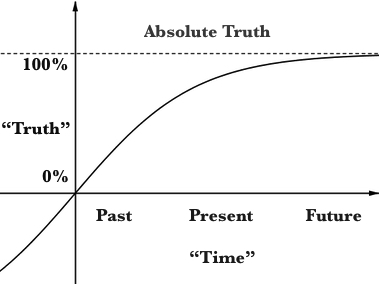
With this common background under our collective belt, let’s look at the most obvious effect of gravity, i.e., weight. Weight is a force.

A force is the mathematical product of the mass of an object (the amount of stuff it contains or how much gravity it produces) times acceleration (a change in the speed or direction of motion).
Roughly 100 percent of humanity’s “products” ever manufactured, sold, traded,borrowed, stolen or lost took placeat or very near the surface of the Earth. For this simple reason, the mass of an object (how much stuff is in it) and the weight of an object (how hard the Earth’s gravity pulls on that stuff) is used interchangeably to the point of blending, blurring and confusing the two terms into a single idea. This confusing of the two ideas causes very few problems as long as humans remain firmly attached to the surface of the Earth. Problems arise when humans leave the Earth’s surface and are in freefall orbit where their mass stays the same but their weight is essentially zero, not due to lack of gravity but lack of a planetary surface upon which to stand. Further confusion arises when humans visit other worlds (thus far just the moon). Remember that the force of gravity a world produces at its surface is directly proportional to its mass and inversely proportional to the distance from its center of mass to where you are on the world’s surface squared.
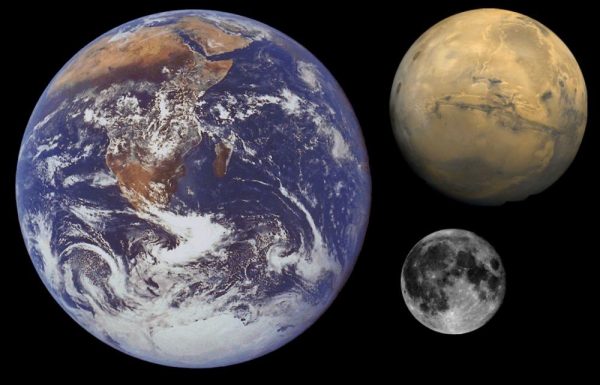
On the moon’s surface, your mass remains the same, but with 3/11 the radius of the Earth and 0.01230 the Earth’s mass, you would weigh 0.1654 or about 1/6 what you do on the Earth.
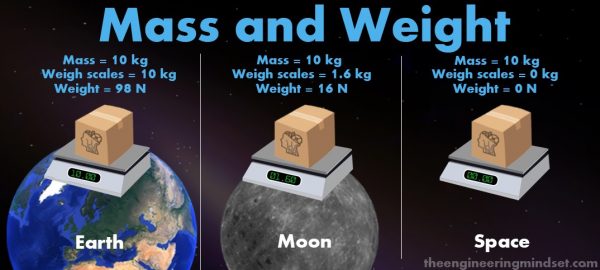
On Mars, your mass is the same as it is on the Earth, but with 0.532 times Earth’s radius and 3/28 or 0.10745 the mass of the Earth, you would only weigh 0.3794 or 8/21 the weight you do on the Earth’s surface.
This line of thought, i.e., having differing weights on different worlds is the underlying key to the Big Idea I submitted to NSF.
See Part 2 next week for the details of the submitted Big Idea.
• Robert E. Strong received a bachelor of arts degree in physics with minors in mathematics and philosophy and has a master’s degree in space studies. Robert taught secondary school math and science in Benin, West Africa, (Peace Corps volunteer) and in American Samoa. He worked as a physicist in a research laboratory. Robert is president of the Near Earth Object Foundation dedicated to educating the general public about Near Earth Objects and providing public StarWatches. Robert and his wife Libby started the SMART-Center in 1994, a hub for science- and math-related activities for area schools, educators and the community. They also operate the SMART Centre Market — an interactive hands-on science store in Wheeling, featuring Orion telescopes, science toys and Kirke’s ice cream.


